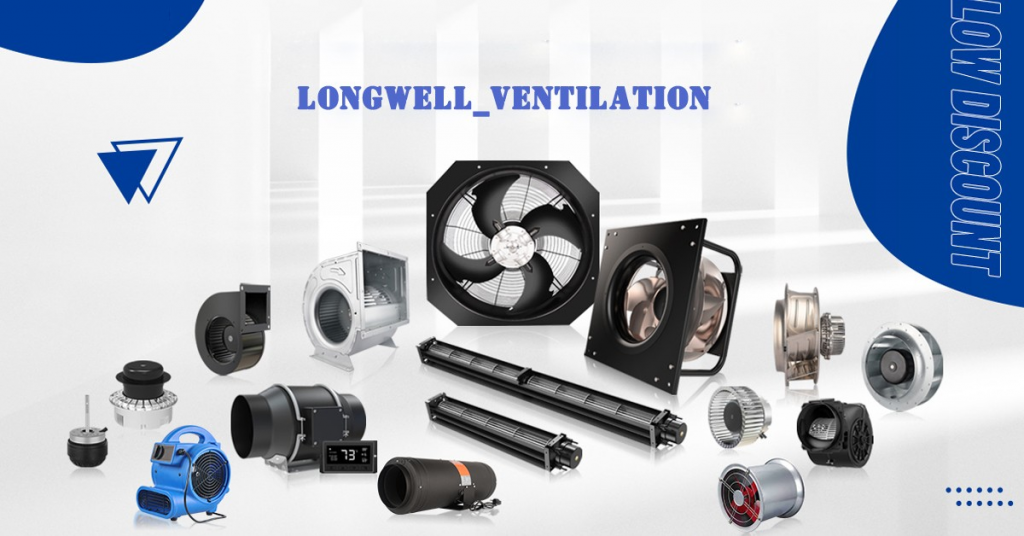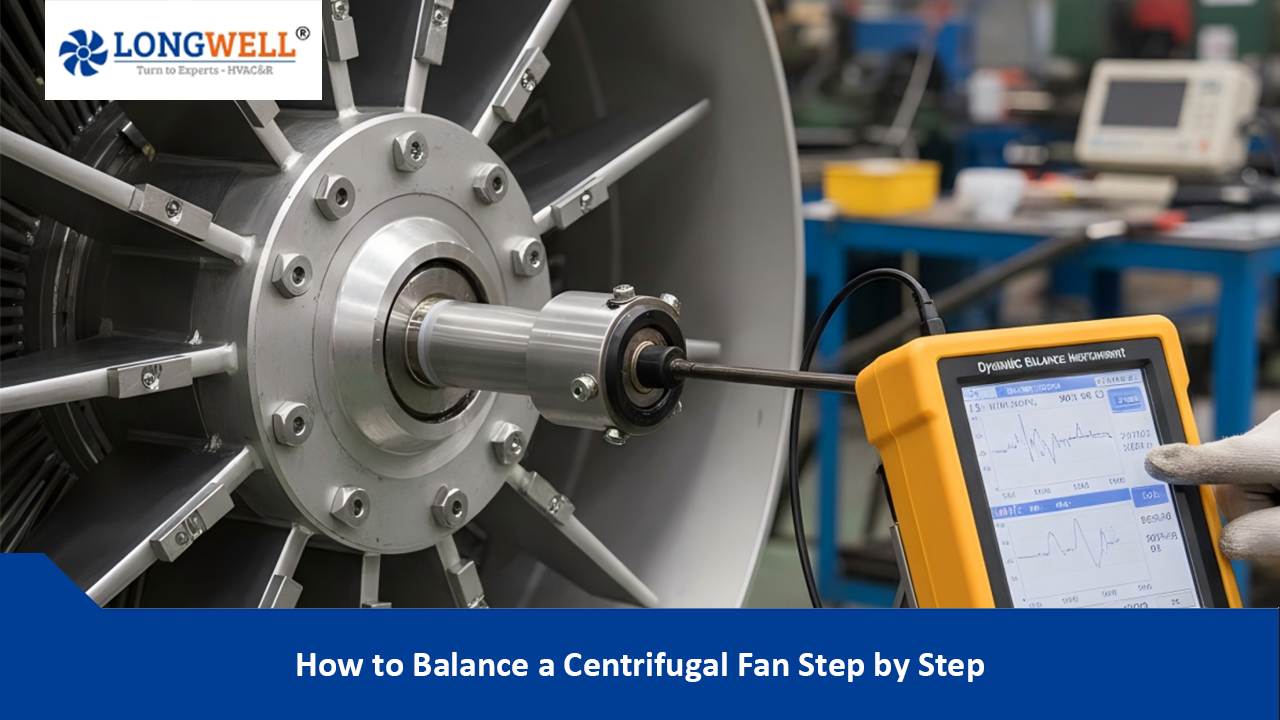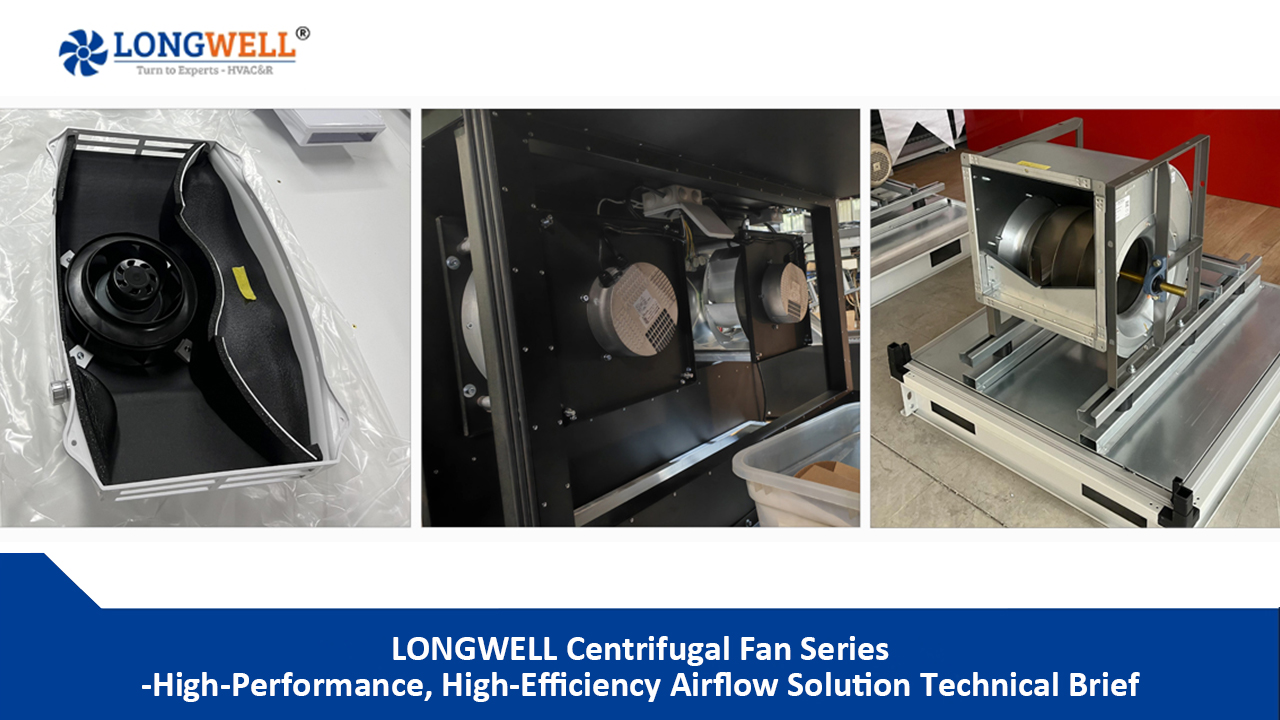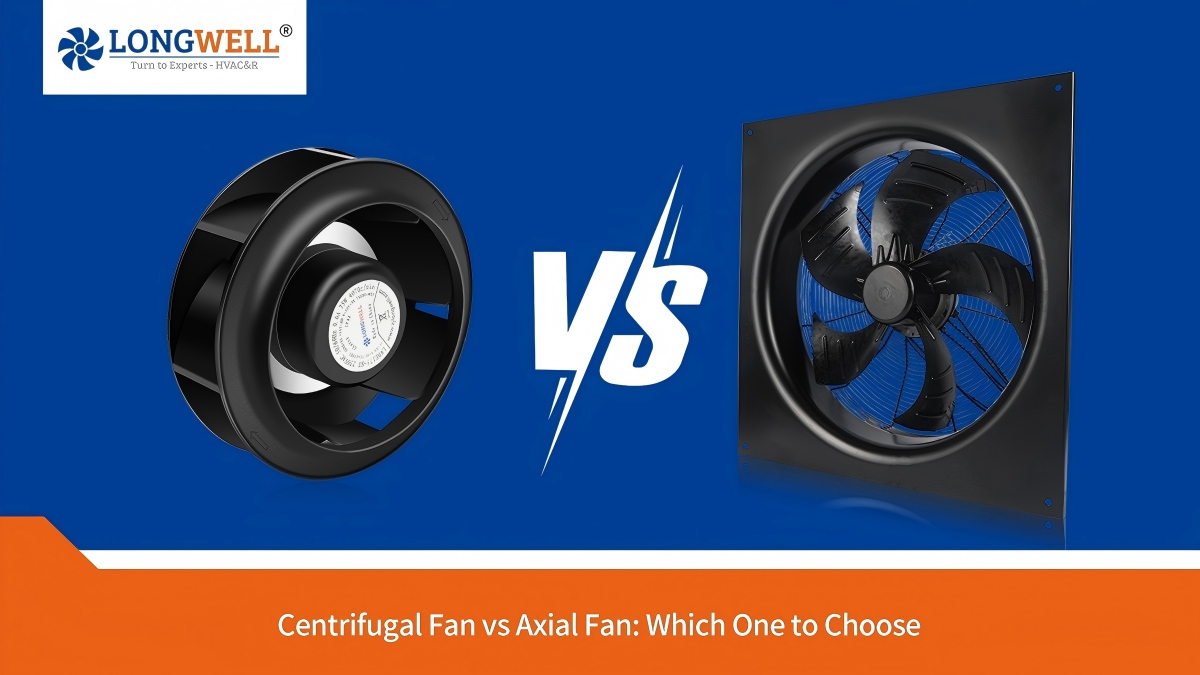Introduction: A Silent Revolution in Air Movement
Imagine your business grappling with rising electricity bills while simultaneously striving to meet increasingly stringent environmental regulations. It’s not just about cost; it’s about staying competitive in a demanding market. Today, energy-efficient solutions are no longer a luxury but a critical necessity for businesses to thrive. It’s against this backdrop that EC (Electronically Commutated) cross flow fans have quietly emerged, bringing a breath of fresh air and a revolutionary change to modern industrial and commercial practices. Unlike traditional fans, EC cross flow fans are uniquely designed to deliver a wide, uniform airflow. This isn’t just a minor product iteration; it’s a profound yet understated transformation in industrial practices, offering decision-makers an innovative, reliable, and compliant ventilation solution.
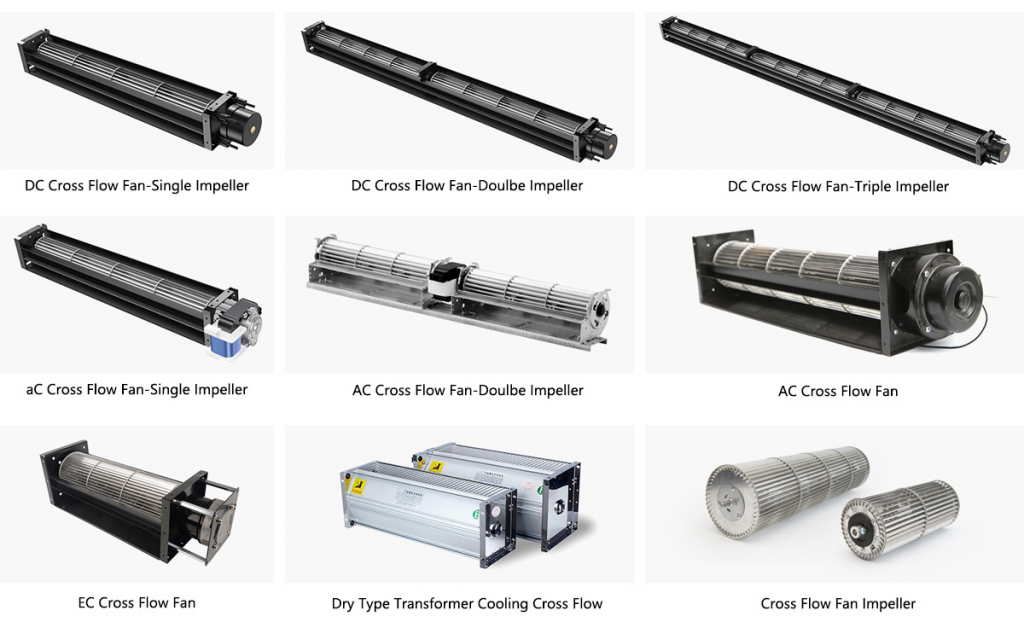
The Secret Behind EC Cross Flow Fan Efficiency
The remarkable energy efficiency of EC cross flow fans lies at the heart of their “smart” Electronically Commutated (EC) motor. Unlike conventional AC (Alternating Current) motors, EC motors cleverly combine the best characteristics of both AC and DC power, utilizing a brushless permanent magnet DC motor with integrated onboard electronics. This design fundamentally changes how the motor operates, eliminating the energy loss typically associated with establishing a rotor magnetic field in traditional induction motors.
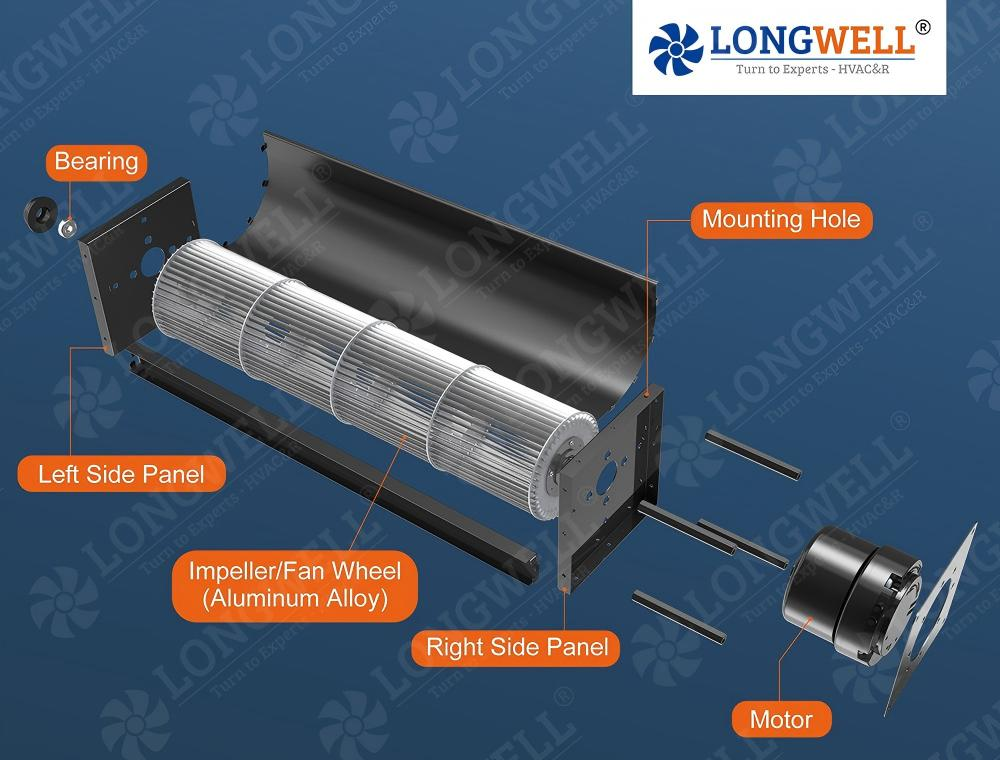
EC Technology Advantages: Beyond Traditional Motors
This technological leap directly translates into significant energy efficiency. EC motors can reduce power consumption by up to 50% compared to traditional motors. Some sources even indicate that EC fans can achieve efficiencies of up to 90% , and impressively maintain 91-95% efficiency across a wide speed range (10%-100%). This inherent high efficiency, coupled with their brushless design and electronic commutation, significantly reduces energy losses from friction and heat.
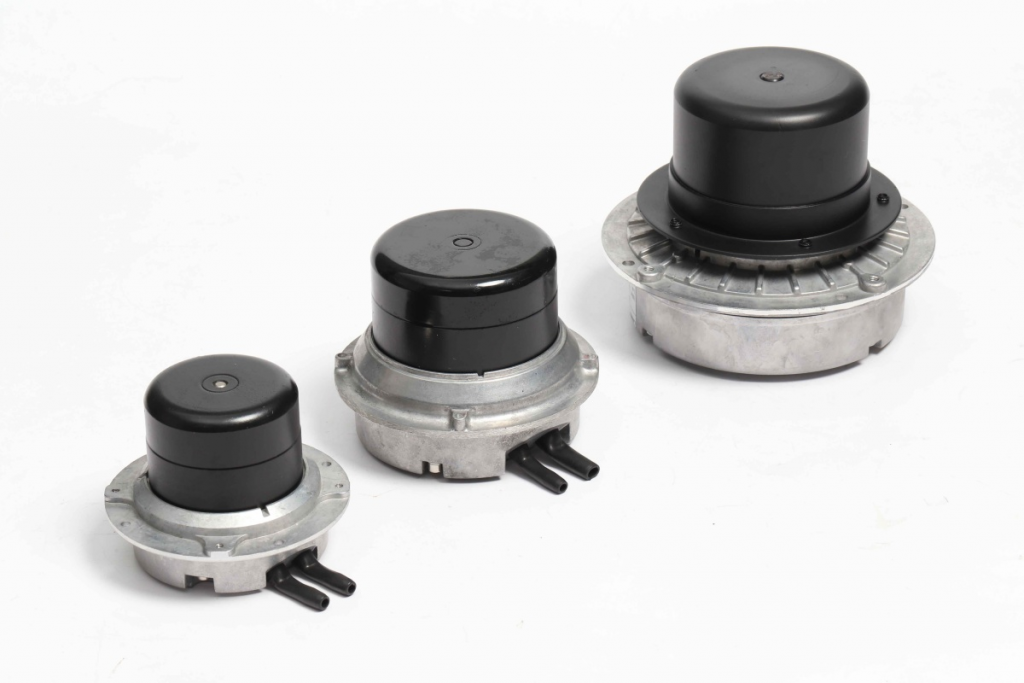
Precise Control: Key to Optimized Energy Use
The integrated electronics in EC motors enable precise speed control, which is a crucial factor for energy optimization. Users can electronically fine-tune the fan’s airflow output to meet specific demands, ensuring the fan consumes only the energy required to complete the task.
This variable speed control is a major driver of energy savings. The relationship between fan speed and required power follows a cubic law: even a slight reduction in fan speed can lead to a substantial decrease in power consumption. For instance, reducing fan speed by just 20% can cut power consumption by nearly 50%. EC fans offer advanced control modes, including constant pressure, constant flow, and constant power. This allows the fan to adjust its power output in real-time based on load changes and automatically adjust fan speed to maintain stable operation even when power supply voltage fluctuates. This dynamic adaptability ensures continuous peak efficiency.
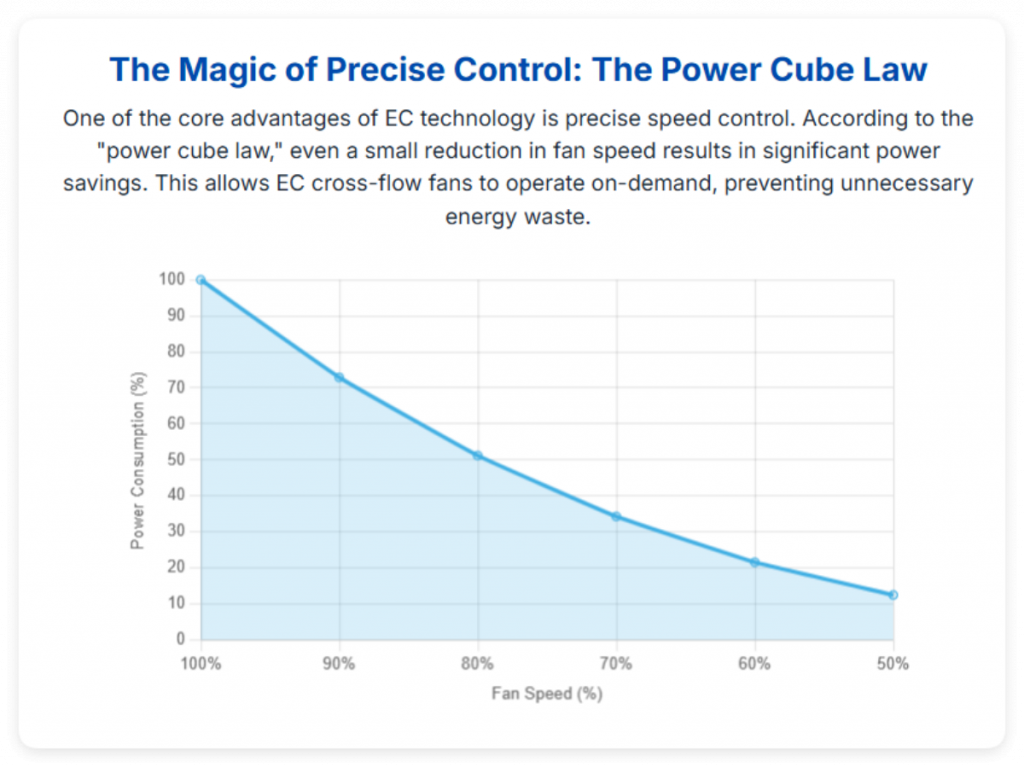
Superior Aerodynamics: Designed for Minimal Resistance
Beyond the motor, the physical design of EC cross flow fans also contributes significantly to their energy efficiency. Their blades are precisely engineered using aerodynamic principles, much like an airplane wing, to achieve greater airflow with minimal resistance.
Cross flow fans, also known as tangential fans, feature a unique impeller design that draws air in along the fan’s entire length and discharges it at a right angle, creating a wide, uniform sheet of airflow. This design minimizes turbulence and resistance, meaning the motor doesn’t have to work as hard. Engineers meticulously design elements like the curvature and twist of the blades, optimal blade angles, and the appropriate number of blades to ensure smooth airflow and reduce wasted energy. Furthermore, using lightweight materials such as plastic or aluminum for the blades reduces the load on the motor, further enhancing efficiency.
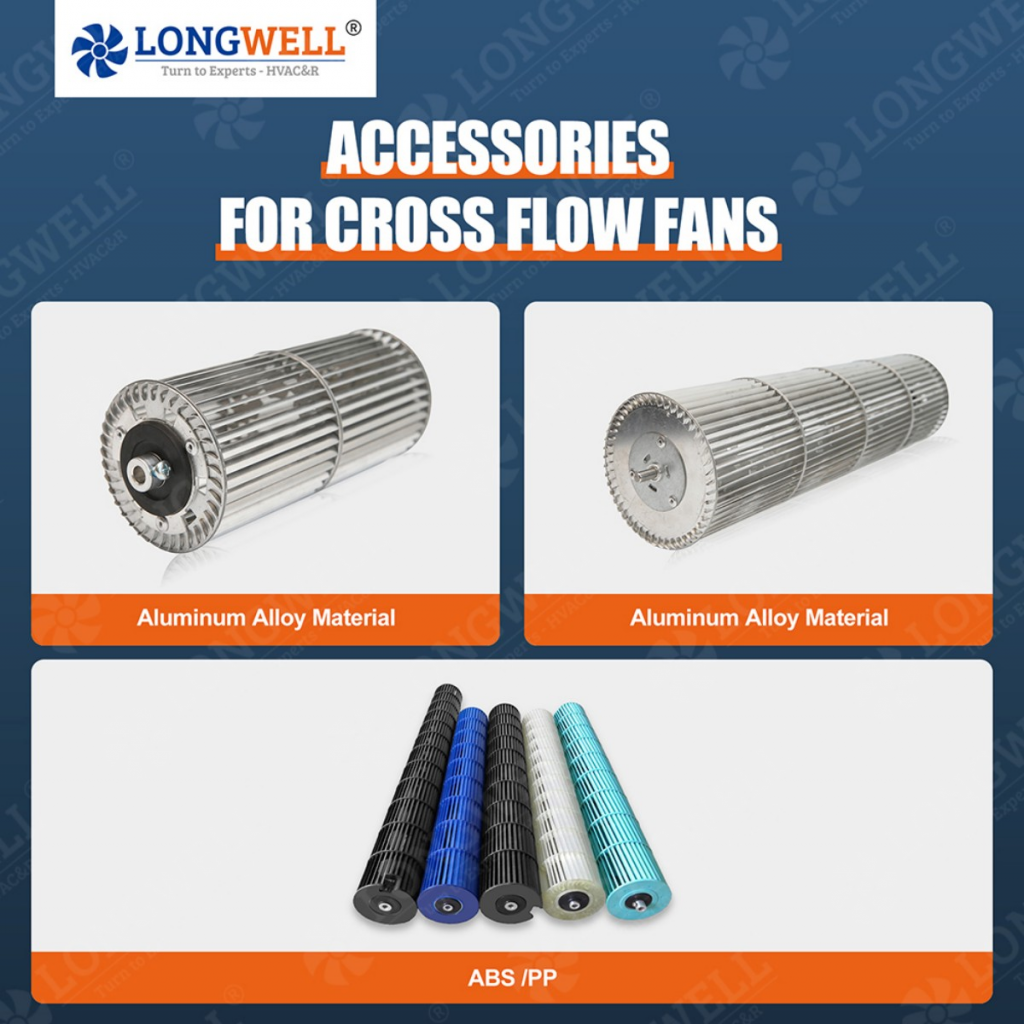
The true efficiency of EC cross flow fans stems from the synergistic integration of three core elements: the highly efficient EC motor, precise electronic control that leverages the fan’s cubic power law, and optimized aerodynamic design. It’s not merely a sum of its parts, but a system engineered for maximum energy conversion. This integrated approach leads to overall performance improvements, including reduced heat generation and noise, which are crucial for equipment longevity and operational comfort.
Performance Comparison of EC Fans vs. Traditional AC Fans
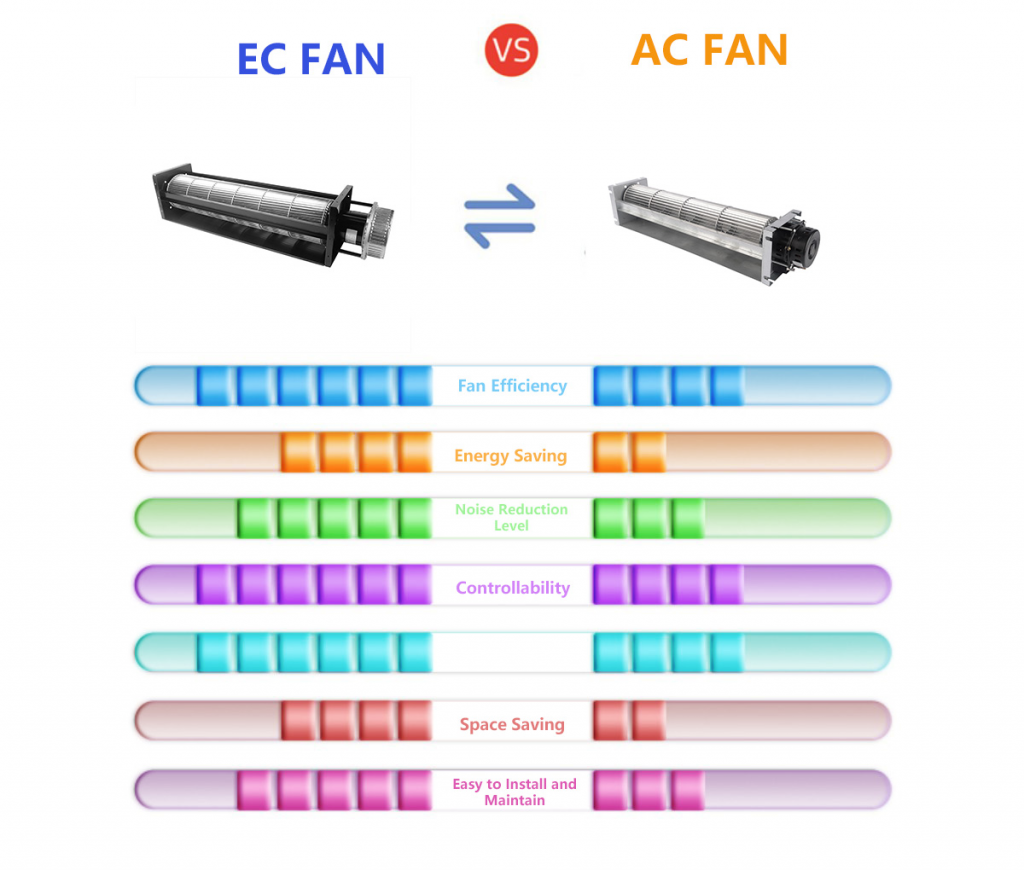
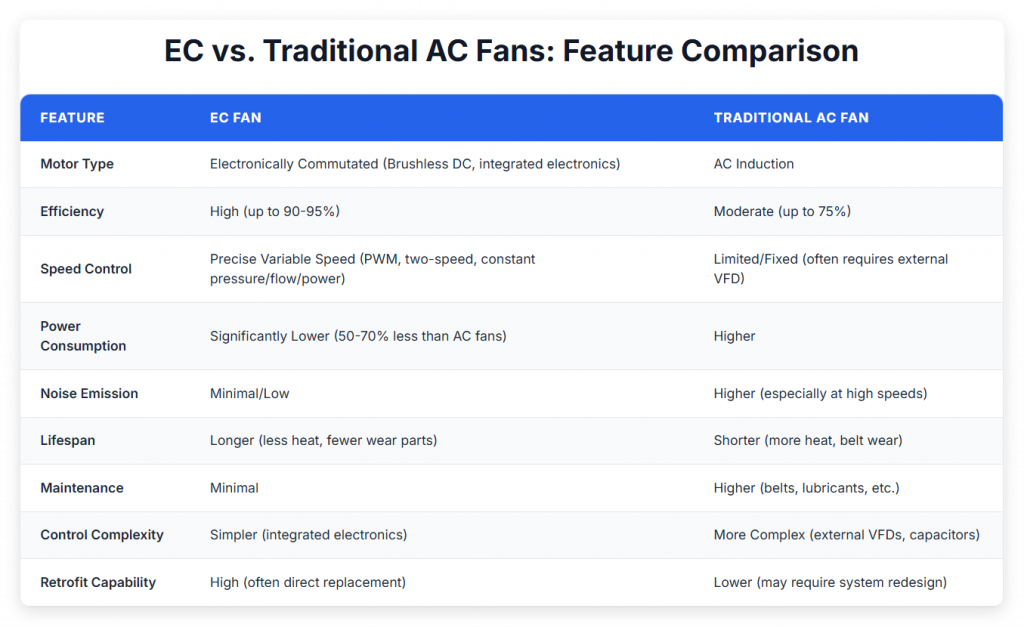
Tangible Benefits: More Than Just Lower Bills
The exceptional energy efficiency of EC cross flow fans directly translates into substantial reductions in operational costs, offering a compelling return on investment. As previously mentioned, EC motors can reduce power consumption by up to 50% compared to traditional motors.
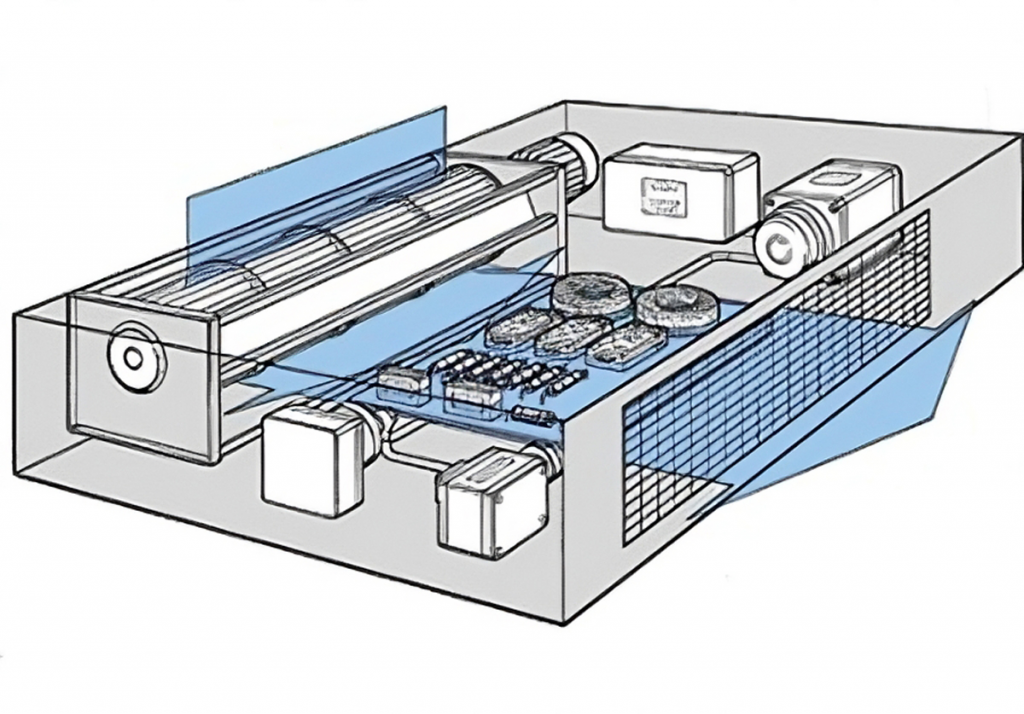
Significant Energy Savings: Real Impact and Cost Reduction
Let’s look at a couple of real-world examples to illustrate the financial impact:
Case Study 1: Mr. Li's Factory Ventilation Upgrade
Mr. Li, who owns a small factory, was struggling with dozens of old AC inline fans, each costing him about $85 annually in electricity. He decided to try upgrading to EC inline fans. The new fans consumed only 21W, bringing his annual electricity cost down to approximately $30 per fan. This meant a saving of $55 per fan per year. With dozens of fans, this amounted to thousands of dollars saved annually, which Mr. Li could then reinvest in other equipment or use for employee benefits.
Case Study 2: Mr. Wang's Data Center Cooling Revolution
Mr. Wang, managing a large data center with thousands of servers, faced the critical challenge of heat dissipation. Previously, they used AC axial fans, costing around $24.60 per fan annually. When they introduced EC axial fans, despite a slightly higher initial investment, each fan consumed only 4.5W, reducing the annual cost to approximately $4.73. This translated to nearly $20 saved per fan per year. Multiplied by thousands of fans, these massive savings quickly offset the initial investment, and the data center’s operations became more stable.
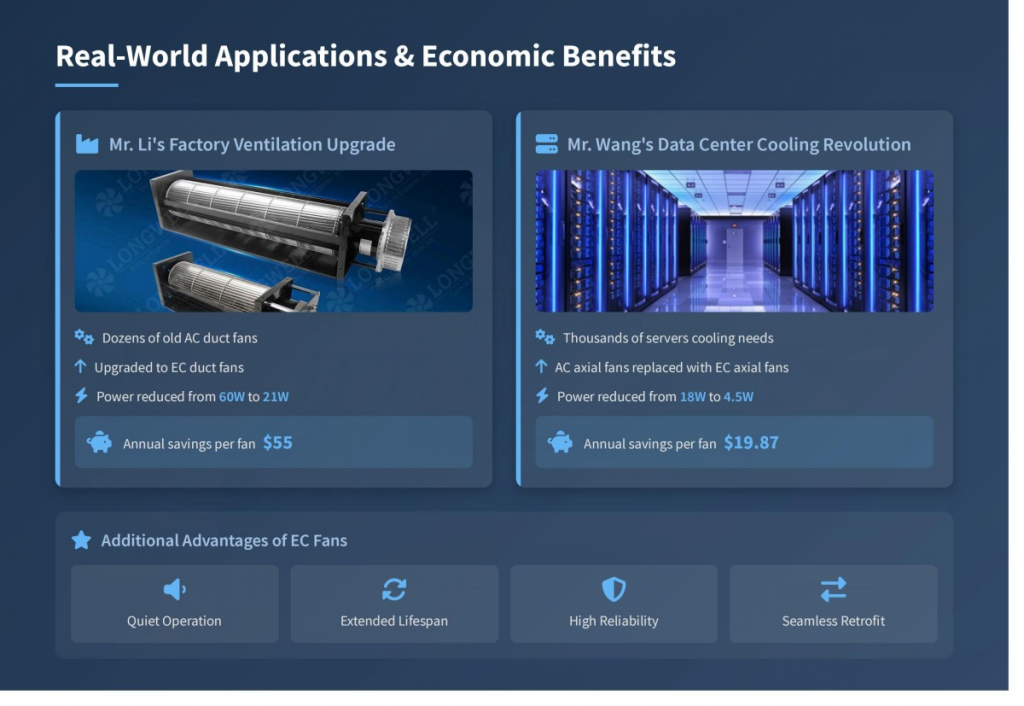
These concrete examples clearly demonstrate that while the initial purchase cost of EC motors might be slightly higher, the significant operational savings quickly offset the difference, leading to substantial long-term benefits. For large-scale applications like data centers with thousands of fans, the cumulative savings are immense. These specific economic figures are crucial for business decision-makers, as they directly justify the financial rationale for investing in EC technology.
Enhanced Performance and Comfort: Quiet Operation, Longer Lifespan, and Reliability
EC cross flow fans are specifically designed for minimal noise emission. Their brushless design, advanced commutation methods, and aerodynamically optimized impellers result in significantly quieter operation compared to traditional fans. This makes them ideal for noise-sensitive environments such as commercial kitchens, cleanrooms, or public spaces where maintaining a quiet atmosphere is crucial.
The inherent high efficiency of EC motors means less energy is wasted as heat. This lower operating temperature directly extends component life. Furthermore, their robust construction with high-quality materials and fewer wear parts (like belts in traditional systems) reduces the need for frequent maintenance, ensuring exceptional durability and reliable performance even in demanding industrial environments. EC cross flow fans provide a stable, uniform airflow , which is critical for applications requiring precise air control and filtration, ensuring optimal air quality and consistent environmental conditions.
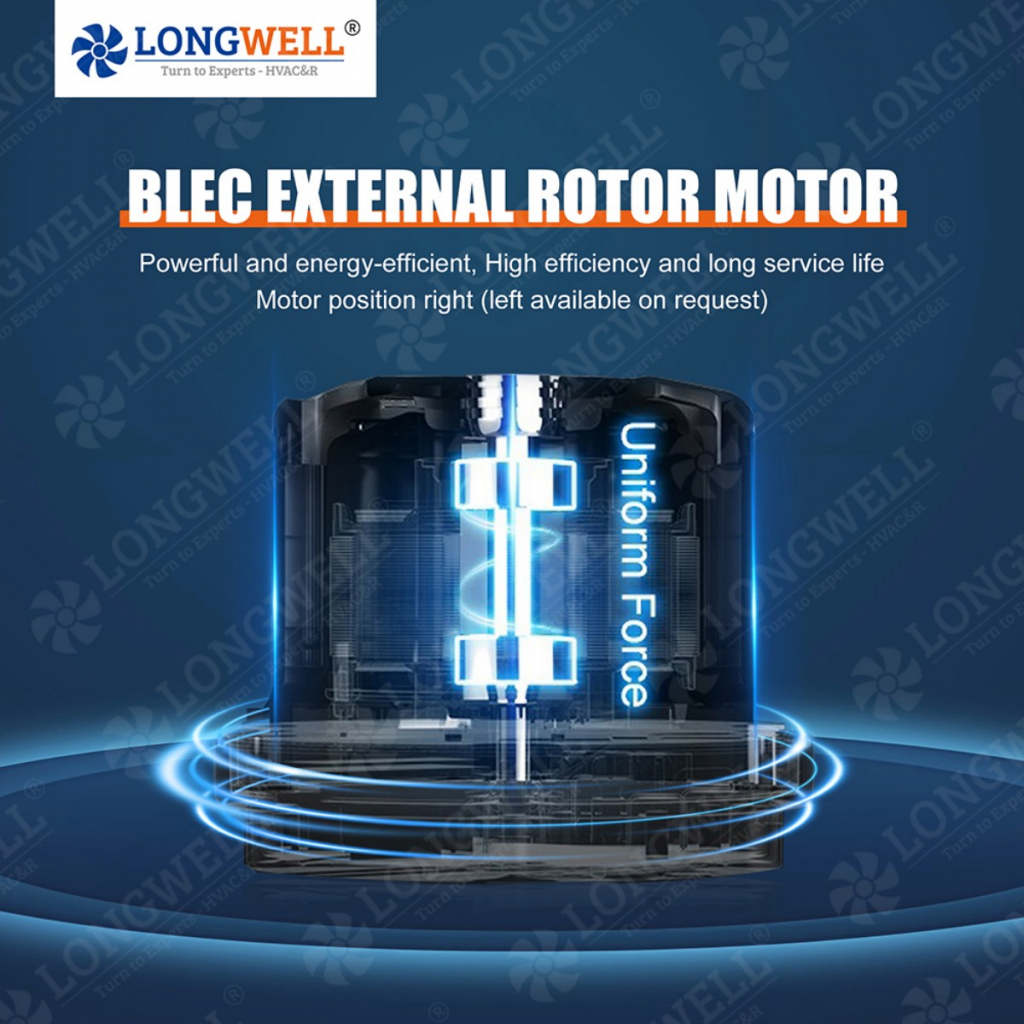
Seamless Integration: Retrofit Capability and Versatility
One of the most appealing aspects of EC cross flow fans for existing infrastructures is their ease of integration. Many EC fans are designed as “drop-in replacements” for inefficient AC fans, meaning they can be installed without significant changes to existing system interfaces. Their compact motor design facilitates easy replacement of existing equipment. This versatility also extends to their motor capabilities, as EC motors can efficiently drive both axial and radial fans, broadening their applicability across various system designs.
The advantages of EC cross flow fans create a powerful overall value proposition that extends far beyond simple energy cost savings. They address critical business concerns such as Total Cost of Ownership (TCO), operational reliability, compliance, and user comfort. The ability to seamlessly retrofit is a key enabler, significantly lowering the barrier for businesses to upgrade existing systems without massive capital expenditure or downtime. This often translates to faster ROI and a more agile approach to sustainability.
Energy Saving Examples: EC vs. AC Fan Operating Costs
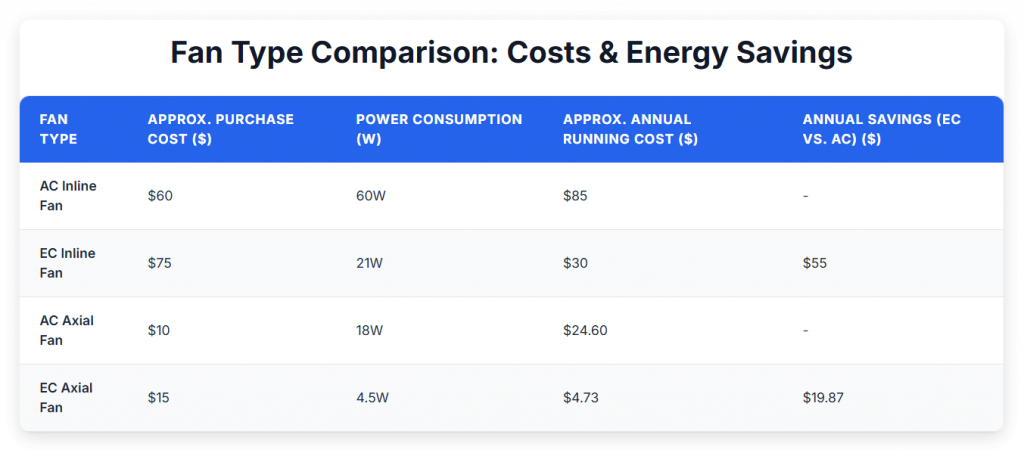
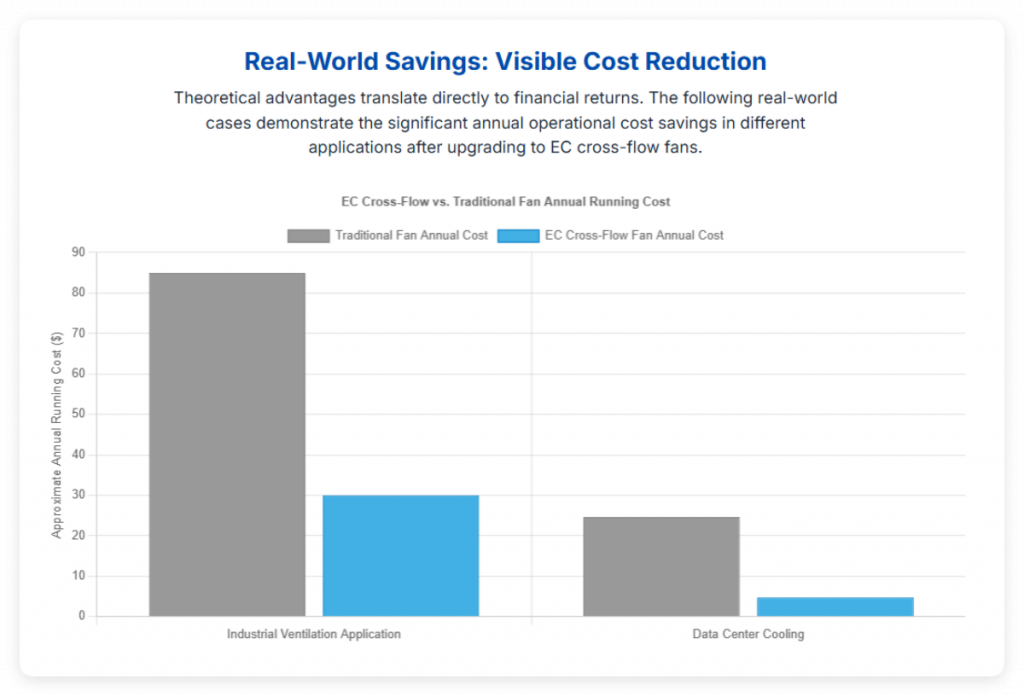
Applications of EC Cross Flow Fans
The widespread application of EC cross flow fans highlights their remarkable versatility and adaptability, making them a “smart, flexible solution” across diverse industries.
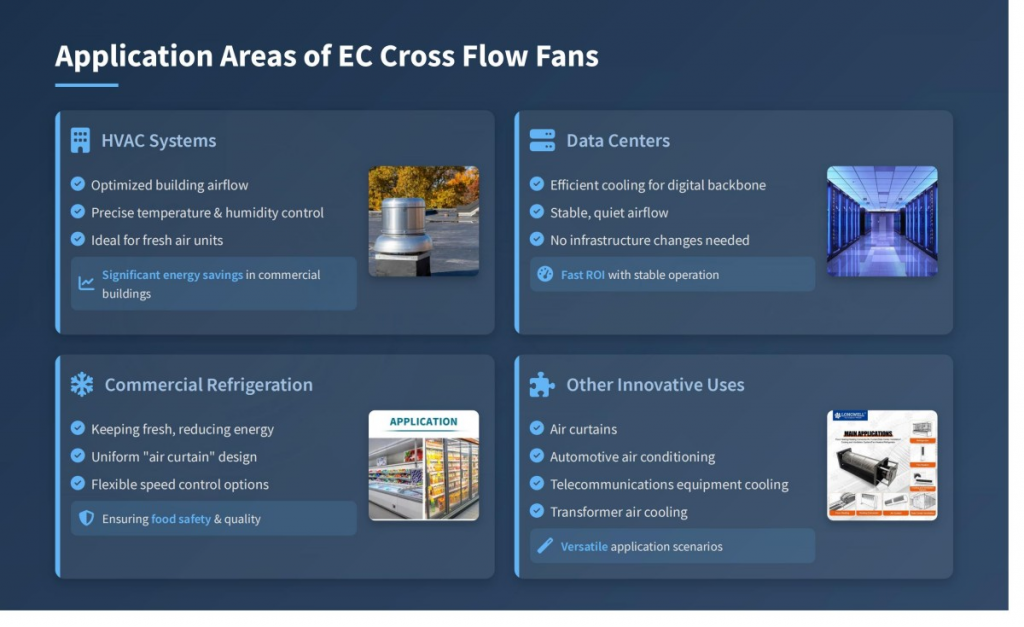
HVAC Systems: Optimizing Building Airflow
EC cross flow fans are increasingly becoming the go-to choice for Heating, Ventilation, and Air Conditioning (HVAC) systems. Their ability to efficiently handle high-pressure airflow while maintaining energy efficiency makes them ideal for ventilating large buildings. Imagine a modern office building requiring precise temperature and humidity control in every zone. EC fans excel at improving overall airflow dynamics while precisely controlling temperature and humidity levels, leading to significant energy savings for commercial and industrial buildings. They are particularly well-suited for fresh air units and can serve as a replacement for traditional variable frequency AC fans, offering lower operating costs and reduced noise.
Data Centers: Efficiently Cooling the Digital Backbone
In data centers, where continuous operation and heat dissipation are paramount, EC cross flow fans offer critical advantages. These environments generate immense heat, requiring constant, reliable cooling to prevent equipment failure. EC fans provide stable, quiet airflow, which is essential for maintaining optimal temperatures and ensuring the reliability of servers and other critical equipment.
Remember Mr. Wang’s story? Replacing existing AC motors in server racks with EC motors offers tremendous energy-saving potential. Crucially, these upgrades often don’t require changes to the data center’s existing AC power infrastructure, as EC fans internally convert AC to DC power. Given that each server rack can house 12 to 16 fans, the cumulative savings from thousands of fans in a data center can quickly offset the initial investment, demonstrating a rapid return on capital. Nevertheless, when retrofitting EC plug fans in legacy data centers, careful simulation of airflow changes is essential to prevent issues like hotspots.
Commercial Refrigeration: Keeping Things Fresh with Less Energy
Picture the open display cases in a supermarket, brimming with fresh produce and meats. EC cross flow fans are specifically engineered for the demanding needs of commercial refrigeration. They deliver uniform airflow, quiet operation, and exceptional energy efficiency in applications ranging from open display cases to refrigerated cabinets and prep tables. Their unique cross flow design creates a uniform “air curtain,” which is critical for maintaining consistent temperatures across refrigerated surfaces and preventing hot spots, thereby ensuring product integrity and food safety compliance.
Flexible speed control options—single-speed, two-speed, or fully variable via Pulse Width Modulation (PWM)—allow these fans to adapt to changing conditions, such as day/night modes or door-open/door-closed scenarios, maximizing energy savings during off-peak hours.
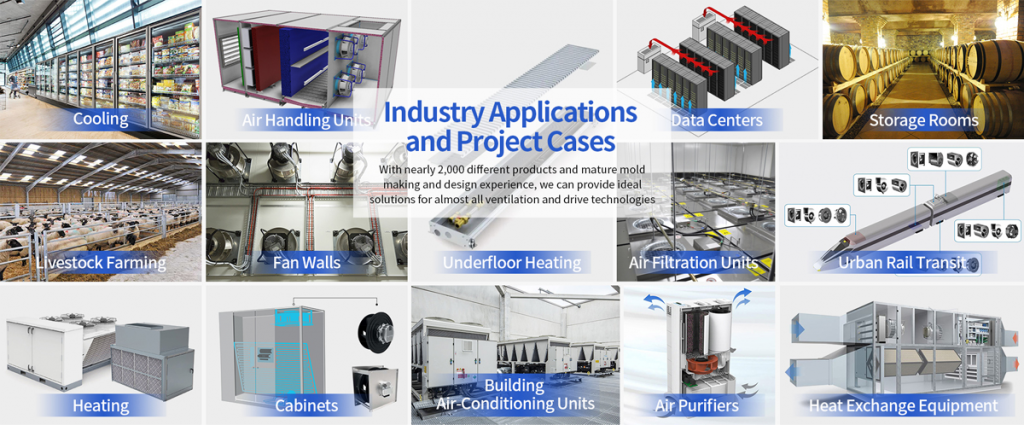
Other Innovative Uses: From Air Curtains to Automotive Air Conditioning
The versatility of EC cross flow fans extends to numerous other applications where precise, uniform airflow and energy efficiency are advantageous. These include: drying units , air curtains , melting machines , transformer air cooling , automotive air conditioning , telecommunications cooling , packaging and production machines , ventilation and fan coil units , and air handling units.
The core attributes of EC fans—efficiency, precise control, quiet operation, and compact form factor—directly enable optimal performance and energy savings in these demanding environments. The “drop-in replacement” capability for data centers is crucial for rapid adoption and ROI, as downtime is costly. Maintaining consistent temperatures in refrigeration is not just about efficiency but also product quality and safety, adding another layer of value.
Maximizing Efficiency: Influencing Factors and Best Practices
To achieve the highest energy efficiency from EC cross flow fans, it’s crucial to get it right from the design and proper selection stages. These foundational elements profoundly impact the fan’s operational efficiency and energy consumption.
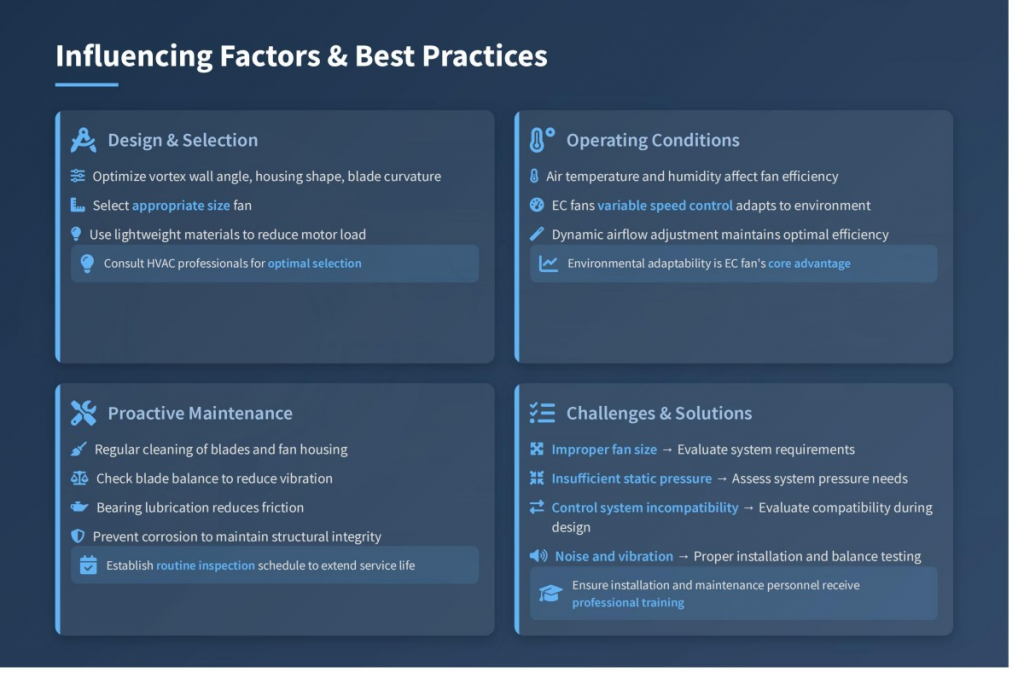
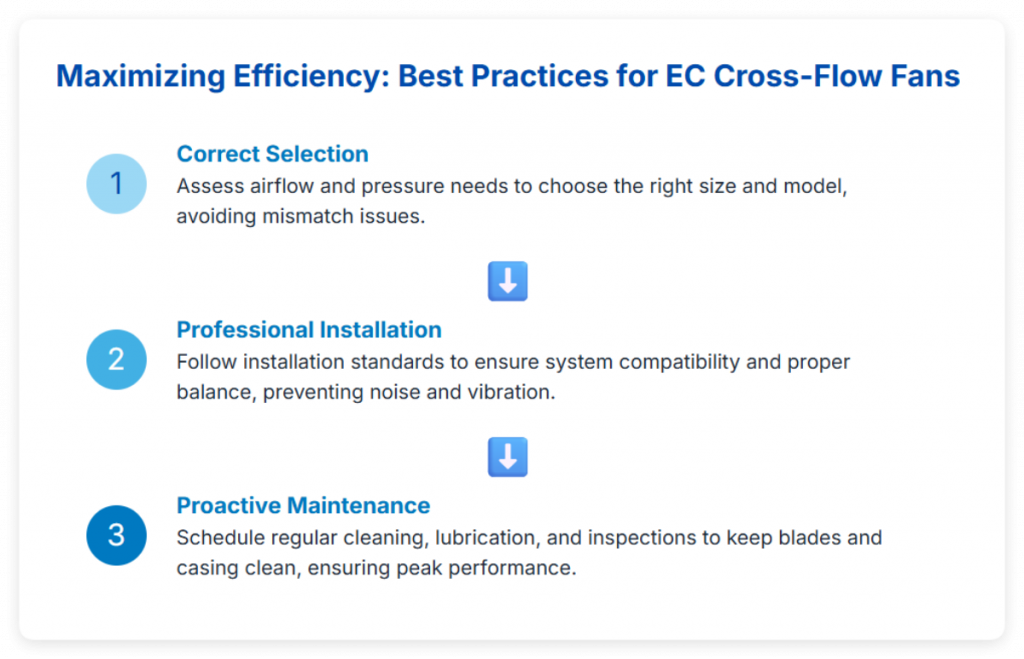
Design and Selection: Getting It Right from the Start
Engineers can significantly enhance fan performance by optimizing elements such as vortex wall angles, casing shapes, blade curvature and twist, the number of blades, and the materials used. These adjustments minimize air resistance and wasted energy, allowing the motor to achieve greater airflow with less effort. For example, using lightweight materials like plastic or aluminum for blades reduces the motor’s load, directly lowering power consumption.
Selecting the appropriately sized fan for a specific space is critical. An oversized fan will waste energy due to inefficient operation, while an undersized one will struggle to meet airflow demands, leading to compromised performance and potentially increased energy consumption from overworking. Consulting HVAC professionals is essential for optimal selection.
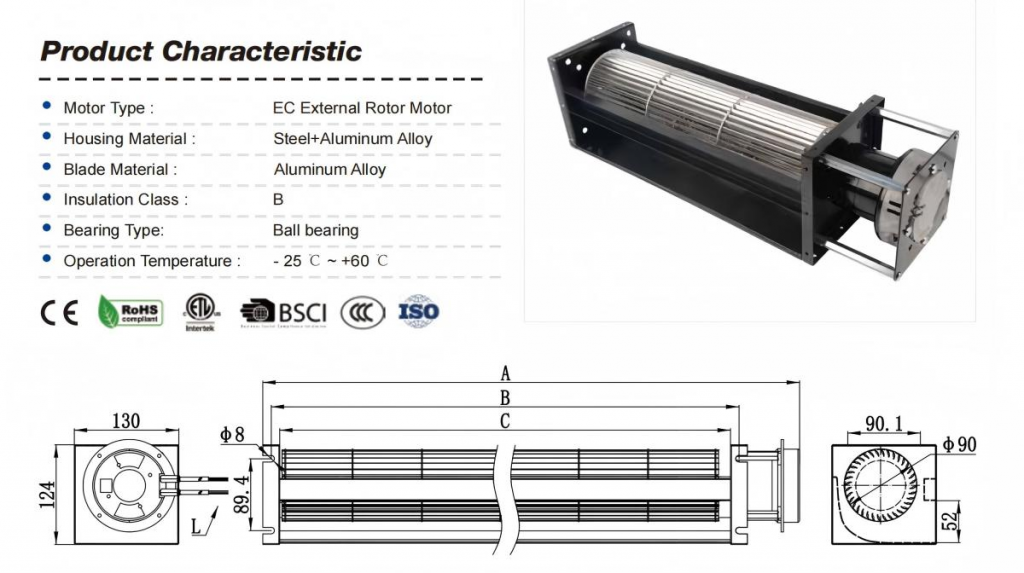
Operating Conditions: Adapting to the Environment
The environment in which an EC cross flow fan operates also influences its efficiency. Factors like air temperature and humidity can affect how hard the fan must work. Hotter or more humid air can increase the fan’s load, potentially reducing efficiency.
Fortunately, the inherent variable speed control of EC fans allows them to dynamically adapt to changing environmental conditions, maintaining optimal efficiency by precisely matching airflow demands. This adaptability helps mitigate efficiency losses that might otherwise occur under fluctuating conditions.
The Power of Proactive Maintenance: Keeping Fans in Top Shape
Even the most advanced EC cross flow fans require consistent, proactive maintenance to sustain their high efficiency and extend their lifespan. Neglecting maintenance can lead to increased energy consumption and reduced airflow.
Key maintenance practices include:
- Regular Cleaning: Dust and debris buildup on blades and fan casings can obstruct airflow, forcing the motor to consume more power. Regular cleaning prevents this.
- Blade Balance Checks: Imbalanced fan blades can cause vibrations, leading to premature component wear and reduced efficiency.
- Lubrication: Oiling bearings reduces friction, ensuring smooth operation and saving energy.
- Corrosion Prevention: Protecting components from rust and corrosion preserves their structural integrity and operational efficiency.
Establishing a routine schedule for inspections, cleaning, lubrication, and major check-ups is crucial for keeping fans in optimal condition and maximizing long-term energy savings.
Addressing Challenges: Overcoming Obstacles in EC Fan Implementation
While EC fan retrofits offer immense benefits, anticipating and addressing common challenges ensures a smooth transition and optimal performance:
- Inadequate Fan Sizing:
– Challenge: Selecting the wrong size can lead to inefficient operation.
– Solution: Thoroughly assess the existing system’s airflow and pressure requirements, consulting HVAC experts for optimal sizing.
- Insufficient Static Pressure:
– Challenge: EC fans may have different pressure capabilities, potentially leading to poor airflow distribution if mismatched.
– Solution: Carefully evaluate system static pressure needs and ensure the chosen EC fan can generate the necessary pressure; consider system modifications if required.
- Incompatibility with Control Systems:
– Challenge: Retrofitting EC fans into existing HVAC systems might lead to control system compatibility issues.
– Solution: Thoroughly assess compatibility between existing control systems and EC fans during the design phase, consulting experts for seamless integration and effective communication.
- Noise and Vibration:
– Challenge: Improper installation or balancing can introduce noise and vibration into the system.
– Solution: Follow proper installation practices, conduct thorough balancing tests, and consider noise reduction measures like vibration isolators or sound-absorbing materials.
- Lack of Training and Expertise:
– Challenge: Implementing EC fan retrofits requires specialized knowledge in EC fan technology, system design, and control integration.
– Solution: Engage experienced HVAC professionals with expertise in EC fan technology and ensure installation and maintenance personnel receive adequate training for proper installation, control configuration, and ongoing maintenance practices.
These practical guidelines highlight that optimal performance depends not only on the technology itself but also on intelligent design, correct installation, and diligent ongoing maintenance. Proactively addressing potential challenges demonstrates a deep understanding of practical implementation, building trust with a B2B audience by offering comprehensive solutions, not just product features.
Industry Norms: Regulations and Standards
Globally, increasingly stringent energy efficiency regulations—such as those from the U.S. Department of Energy and the European Ecodesign Directive—are more than just compliance burdens; they are powerful market accelerators for EC cross flow fans. These regulations effectively mandate the adoption of efficient technologies, creating a competitive advantage for manufacturers and users who embrace them.
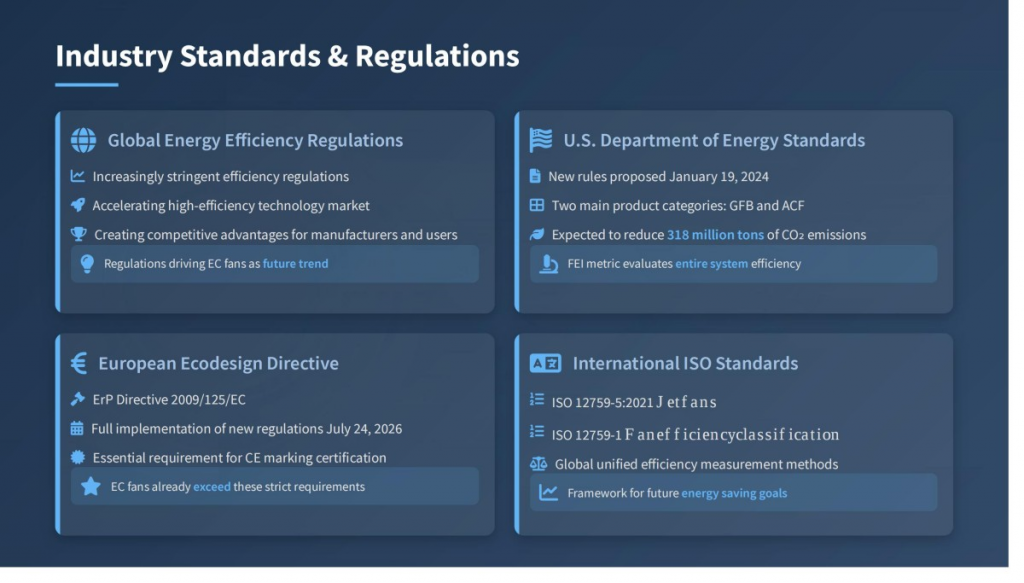
Global Push for Efficiency: U.S. Department of Energy Standards
The U.S. Department of Energy (DOE) is actively driving energy efficiency through proposed energy conservation standards for fans and blowers. A significant proposed rule, published on January 19, 2024, aims to establish new energy conservation standards for two broad categories of products: General Fans and Blowers (GFB) and Air Circulating Fans (ACF).
These proposed standards are expected to yield substantial energy savings, projected to be 18.3 quadrillion British thermal units (Btu) for GFBs and ACFs purchased between 2030 and 2059. This initiative also promises significant environmental benefits, including an estimated reduction of 317.9 million metric tons of CO2 emissions over the same period.
For GFBs, the proposed standards are expressed in terms of the Fan Energy Index (FEI), a wire-to-air metric that considers the efficiency of the entire system (motor, controller, transmission, and the fan itself). For ACFs, efficiency is measured in cubic feet per minute per watt (CFM/W) at maximum speed. These standards are authorized by the Energy Policy and Conservation Act (EPCA) and aim to achieve the maximum technologically feasible and economically justified improvements in energy efficiency.
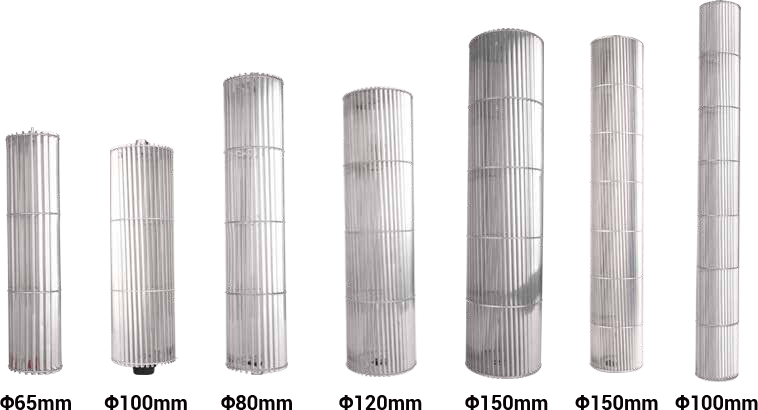
European Ecodesign Directive: Setting High Standards
Across the Atlantic, the European Union’s Ecodesign Directive (ErP Directive 2009/125/EC) has long set stringent minimum efficiency requirements for energy-related products, including fans. EU Commission Regulation (EU) No. 327/2011 currently governs fans, and a more stringent updated regulation, (EU) 2024/1834, will fully replace it by July 24, 2026.
This directive is binding in all EU member states and applies to fans with an electrical power consumption between 125W and 500kW, whether they are standalone units or integrated into larger systems. Crucially, compliance with these efficiency requirements is a prerequisite for obtaining the CE mark, and the regulation assesses the entire fan system, including the motor, aerodynamics, and auxiliary components. Many EC fans already exceed these demanding requirements, demonstrating their future-readiness.
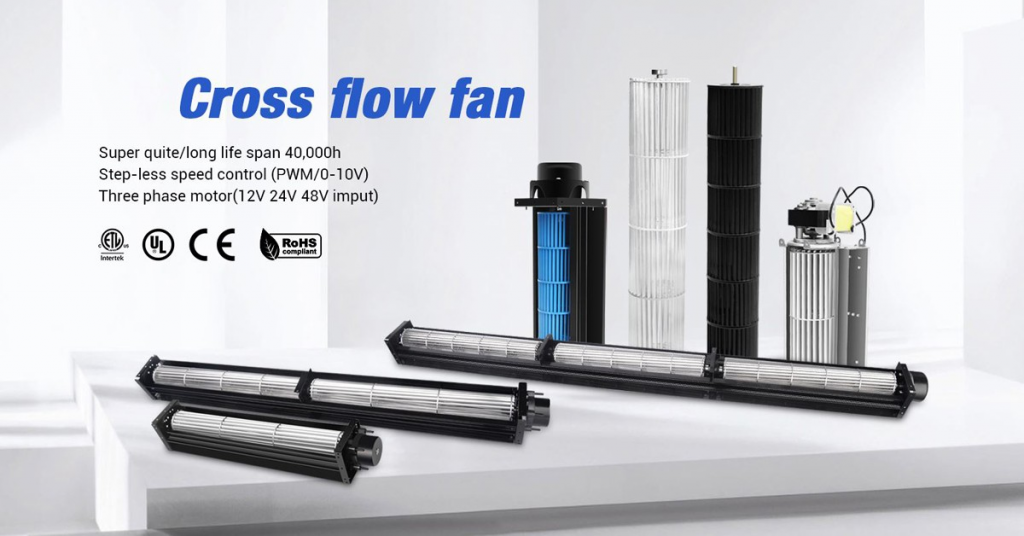
International ISO Standards: A Framework for Performance
Beyond regional regulations, international standards bodies like ISO provide a global framework for fan efficiency. Standards such as ISO 12759-5:2021 (for efficiency classification of jet fans) and ISO 12759-1 (general information for fan efficiency classification) establish consistent methods for defining efficiency classes, testing procedures, and performance criteria. These standards offer valuable references for legislators and regulatory bodies to set future energy-saving targets, promoting uniformity in efficiency measurement and goals worldwide.
Governments and international bodies recognize the significant energy consumption of fans and have, therefore, implemented increasingly strict efficiency standards. These standards drive innovation among manufacturers and push users to adopt more efficient technologies. EC fans, with their inherently advanced efficiency, emerge as a practical solution to meet or exceed these mandatory requirements. For businesses, compliance is not just about avoiding penalties; it’s about market access (especially in the EU, where the CE mark is required), competitive differentiation, and demonstrating a commitment to sustainability. Investing in EC cross flow fans becomes a proactive strategy to ensure long-term operational viability and align with evolving industry benchmarks and societal expectations.
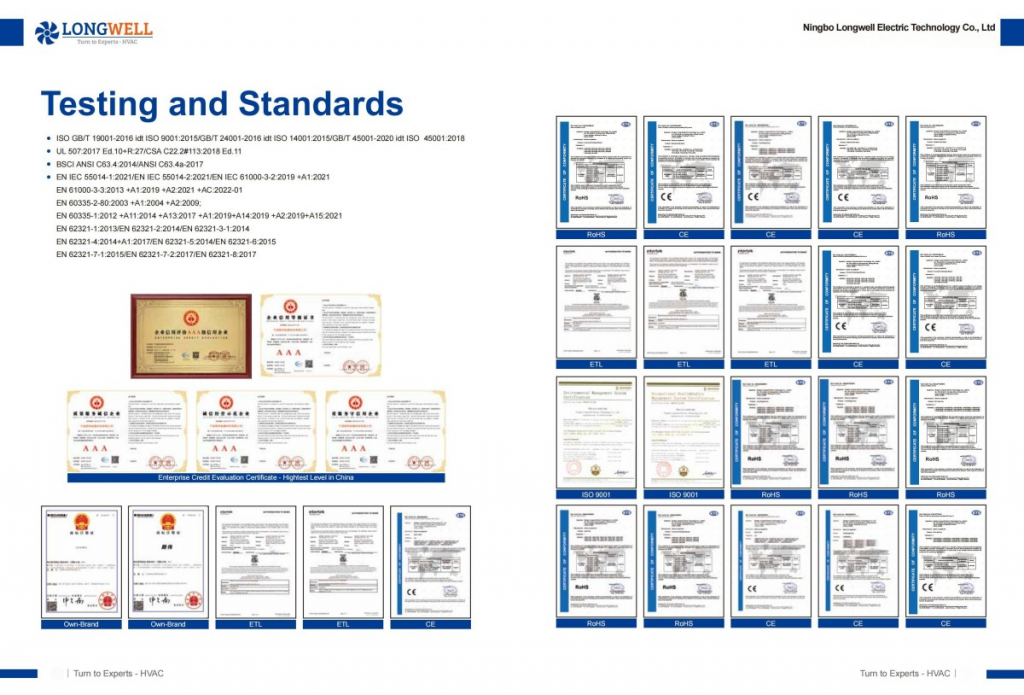
Conclusion: The Future of Sustainable Ventilation is Here
EC cross flow fans stand at the forefront of modern ventilation technology, offering an unparalleled combination of energy efficiency, precise control, and robust performance. Their electronically commutated motors, coupled with advanced aerodynamic designs and intelligent control systems, fundamentally transform how air is moved, leading to significant reductions in power consumption and operational costs.
Their benefits extend far beyond lower utility bills. EC cross flow fans provide whisper-quiet operation, enhanced reliability, and extended lifespan, contributing to improved occupant comfort and reduced maintenance burdens. Their versatility and seamless retrofit capabilities make them an ideal solution for a wide array of applications, from optimizing airflow in complex HVAC systems and cooling high-heat data centers, to maintaining freshness in commercial refrigeration and enabling advanced automotive air conditioning.
In an era of escalating energy costs and pressing environmental mandates, EC cross flow fans are more than just an upgrade; they are a strategic investment. Their ability to meet and often exceed stringent global energy efficiency standards, such as those from the U.S. Department of Energy and the European Ecodesign Directive, positions them as a future-proof technology essential for compliance, competitive advantage, and contributing to a more sustainable world.
The silent revolution in air movement has arrived. By choosing EC cross flow fans, businesses can unleash superior performance, realize substantial long-term savings, and actively fulfill their environmental responsibilities. Now is the time to embrace the future of efficient, reliable, and sustainable ventilation.
